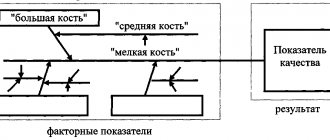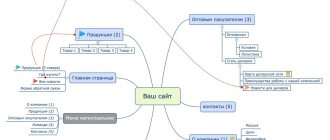To solve various kinds of problems in different areas of life, many effective methods are used today. And among all their diversity, it is the brainstorming method that has become especially popular and widespread. Today we will talk about what it is, and also give 10 rules for its successful and effective implementation.
Brainstorming is one of the TRIZ methods. To learn more methods, evaluate your creative potential and learn ways to improve your creative skills, learn to think outside the box and easily solve difficult problems, come to our online program “TRIZ in Practice”.
Who is the author of the brainstorming method?
Brainstorming was created by Alex Osborne. He had an interesting and eventful life. He worked at a construction site, as a messenger, and as a clerk to earn money for his studies. From the age of 21 he was a police reporter, salesman, teacher. The next position is assistant manager at the plant.
And finally, Osborne became a co-owner of a large company. In 1937, he came up with the brainstorming method. Before telling the public about it, I successfully used it for 2 decades.
Alex Osborne called the creation "brainstorming". The word is translated differently. These are “unexpected brilliant idea”, “crazy idea”, “great plan”, etc.
Advantages and disadvantages of the brainstorming method
Like any other technique, brainstorming has pros and cons. The advantages include:
- Creative thinking develops.
- All participants have to be actively involved in the work.
- One of the tasks of brainstorming is to push the boundaries of consciousness.
- Participants interact with each other.
- Brainstorming technology is easy to use and does not require any equipment or premises.
Interestingly, brainstorming as a learning method is applicable not only to adults. It is often used at school and even in kindergarten. It stimulates creative activity, activates the learning process, helps children form their own opinions and interact with each other.
The disadvantages include:
- As stated above, all group members should actively participate in the discussion. But it happens that only a couple of people work. The others wait silently for the process to end.
- Due to the abundance of ideas and solutions, the event often stretches for several hours.
- The method will be ineffective if the participants do not know how to work in a team and interact with each other.
- Sometimes experienced employees try to become leaders in discussions by overpowering less experienced colleagues.
Also during brainstorming you need to follow a number of rules. Ignoring them nullifies attempts to find a solution to a problem or task.
Capturing ideas
The proposed options can be written in two ways. The first of them involves the participants expressing all ideas in turn. In this case, each of the options is displayed by one specially designated person. In the second method, group members express their ideas at any time. To fix the proposed options, 2-3 people are selected. All records are reviewed by a review team, which should not provide any pre-judgment. She just takes everyone's ideas on board.
Popular types of brainstorming
There are several types of brainstorming. They differ in the technique of conducting, the role of the participants, and the results.
Brainwriting
For 15 minutes, team members write down ideas, but do not speak them out loud. The leaf is passed around in a circle. Participants, having read the previous sentence, add something of their own. The main goal is to put forward as many proposals as possible. However, you cannot criticize until the event is over.
Brainstorming on a whiteboard
The board is placed in a visible place. As soon as an idea comes into the head of a manager or another employee, he writes it down on a piece of paper and pins it on the board.
In Japanese
This type of brainstorming was created by the Japanese Kawakita and Kobayashi. Otherwise called “rice hail”. The point is that the participants use the same approach to solve the problem. The workflow consists of several stages:
- The first step is to identify the problem. The presenter presents the details and nuances of the topic being discussed. Participants write down their thoughts on the problem being solved on separate pieces of paper. Moreover, this is done in such a way that everyone leaves a note on all pieces of paper. Then you need to select records related to each other and hand them over to the presenter. He will read it aloud. All that remains is to come up with a name for each set. It should reflect the essence of the problem.
- Searching of decisions. The stage is similar to the previous one. Only this time, participants write down ideas for solving the problem. At the end they are grouped into sets. Each set is given a name that expresses the general essence of the proposals. The purpose of this part of brainstorming is to identify constructive ideas that are appropriate to the current situation.
Time frame
The brainstorming session will have maximum effect if it is carried out between 10.00 and 12.00 or 14.00 and 17.00. It is advisable to gather group members in a separate room, isolated from noise, in which a poster with the rules of the IMS can be placed, as well as a board for quickly displaying the ideas received on it.
All team members must be seated around the leader’s table in an ellipse or square. The entire discussion should be recorded on video or tape, which will allow you not to miss each of the ideas expressed. Moderate humor is encouraged at such an event.
The method is used for 40-60 minutes, depending on the complexity of the problem being discussed. The easiest questions are resolved within a quarter of an hour.
Stages of classic brainstorming
Generating ideas using brainstorming takes place in 3 stages:
- Definition of the problem. This is preliminary preparation for work. During it, participants are assigned roles. Someone will be the leader, someone will be the assistant, etc.
- Searching of decisions. This stage can be considered the most important. The result depends on it. For maximum efficiency, some rules should be followed. Firstly, you shouldn’t limit your imagination. Come up with any unusual and even absurd ideas. Secondly, the proposals made can be combined with each other, improving them. And thirdly, you cannot evaluate or criticize what the participants said.
- The third stage is grouping and evaluating ideas. It is often ignored. And that's wrong. It is at this moment that suitable ideas are highlighted, the whole process is reduced to a single result.
The success of all stages depends on how coordinated the participants can work. Their opinion regarding the problem and ways to solve it is also important.
Who to trust to conduct brainstorming
The effectiveness of the group depends on who is doing the brainstorming. Therefore, place in this role people who can think creatively, analytically, logically, and also respond correctly to criticism and comments. It is also important that they enjoy the authority and respect of their colleagues. The group leader has a number of responsibilities:
- Decide what type of brainstorming is needed at the moment.
- Gather participants into groups.
- Define the problem at the ideation stage.
- Provide the conditions necessary for the active work of each individual participant.
- Systematize and analyze ideas.
The leader also evaluates the results of the brainstorming session. He decides to implement them in practice.
Group composition
The optimal number of participants in groups is 7 people. The acceptable number of groups is considered to be 6-12 people. It is not recommended to form smaller teams, since it is more difficult to achieve a creative atmosphere.
It is advisable to include people of different qualifications and professions in the group. Specialists are accepted as invited persons (not participants). For more dynamic work, mixed groups (both men and women) are welcome. It is also recommended to balance the number of people with an active and contemplative life position. A negative effect comes from the presence at a discussion of a problem of a manager who is skeptical about the possibilities of resolving it.
A few days before the second stage of the IMS - discussion - those selected in the groups are informed of the date of the event and the formulation of the problem. To do this, the facilitator distributes compact (up to 1 page) printed materials to the participants with a clearly defined goal - solving the problem, its brief description.
It will be useful for those discussing to know the trajectory of the development of the problem; it should be displayed in a diagram. It is also important to show the points of contact between people and the problem: when and under what circumstances this problem really interferes with the realization of the interests of society.
Is it possible to brainstorm online?
There is an opinion that a personal meeting is the best option for brainstorming. But in practice it has been proven that communication via Skype, on forums or in chat rooms is no less effective. And sometimes it gives a greater effect. Why is this happening? There are several reasons:
- Many people are embarrassed to participate in discussions. The calm atmosphere during online brainstorming encourages them to create unusual, unique ideas.
- The proposed solutions are immediately recorded.
- In a chat or forum, team members can speak simultaneously.
- This method of brainstorming requires minimal effort.
- The resulting ideas and solutions are easier to process.
Rules for conducting effective brainstorming
As stated above, the effectiveness of brainstorming largely depends on compliance with the rules for its conduct. There are only 10 of them:
- Preparation is a must. It starts a couple of days before the event. This gives participants the opportunity to explore the problem in advance and find solutions to it.
- As many people as possible should participate in the brainstorming session. Many participants - many ideas.
- The task assigned to the working groups must be thoroughly studied. This will help you see its essence. Participants will be on the same wavelength. There will be no misunderstandings or contradictions.
- Everyone participating in the brainstorming session should take notes. Most often, this responsibility is assigned to the leader. But he is also a person, he misses something or does not notice. Therefore, it is better if participants also take notes.
- This rule can safely be called the most important - do not criticize. You should not condemn, even if what a person says seems stupid or absurd. Maybe this proposal, after revision and improvement, will be implemented in life. Remember: criticism can discourage a person from continuing the discussion. And this cannot be allowed.
- If you're a member, offer more options. Do not be shy. Voice every thought that comes to your mind. Do this even when it seems that the best offer has already been made.
- Involve additional participants to get ideas. Let these be strangers or employees who do not take part in the event.
- Combine ideas with each other. This advice is especially successful if proposals are made by people of different ranks, specialties, and positions.
- To make information easier to perceive, use posters, diagrams, and boards.
- Simulate a situation in which everything does not go as expected. Now think about how to turn it in your direction? Find more options. Prepare yourself for such a turn of events psychologically and morally.
These rules of brainstorming should always be followed, regardless of the field. This could be work, personal and family relationships, business. Take time to organize the process. Take into account its nuances and features. This is how you will find a way out of any situation.
How to choose the right idea?
After brainstorming, there are still a ton of ideas that need to be organized and sorted. If it is clearly difficult to implement the plan, cross it out; if you do not have enough resources (and no real sources), cross it out; if no one is interested, cross it out. There are a number of questions you can ask yourself:
- How quickly can this be accomplished?
- How big is the payoff?
- Is it easy to do?
- Is it cheap?
- Risky?
- What does your fifth point... sixth sense tell you?
Alternatively, you can use a modified SWOT matrix to evaluate ideas. To do this, you need to write down all the solutions received in a list, number it and consider each one separately.
To narrow down the circle of “suspects,” you can ask each participant to choose the TOP 5 ideas.
It is important that the lists are anonymous - at this stage groupthink will only cause harm. mozgovoy-shturm-7-pravil-19-tekhnik-i-10-chastykh-oshibok
Examples of brainstorming
Imagine a ship on which you need to transport iron ore concentrate. Transportation causes a lot of problems because the cargo behaves like a liquid. When the ship rolls or rolls, it flows from one side to the other. Brainstormers need to eliminate this shortcoming.
The facilitator reminds the team not to criticize the ideas expressed. 6 experts put forward solutions to the problem:
- Pour the load to the edge. In this case, there is nowhere for it to flow.
- Press down the concentrate with large shields.
- Using partitions, divide the hold into several parts.
- Spray with polyurethane foam liquid. This is done when transporting grain.
- Wet the load and then freeze it.
- Magnetize.
- Place a pillow under the load. Inflate it with air. It will rise and press the concentrate tightly against the ceiling.
Participants list dozens of ideas. According to the rules, they cannot be stopped. But the presenter suggests moving on to the next stage - criticism. This is where the analyst comes into the conversation. Through discussions, the team realizes that the idea of shields and partitions is not suitable. Suggestion to use air pillows too. They will have to be inflated using an on-board compressor. All together the equipment will be too heavy.
The “magnetic” idea turns out to be the most suitable. Participants propose hanging magnets around the perimeter of the hold in the form of a garland. They can be turned on and off if necessary.











